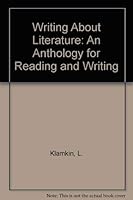The House on Fortune Street: A Novel
Select Format
Select Condition 
Book Overview
Customer Reviews
Rated 5 starsFate, Luck and Inappropriate Desires
At one point in Margaret Livesey's excellent The House on Fortune Street, one of her characters points out that how we handle our inappropriate desires reveals much about us and that statement is true for the four main characters in the novel. Livesey tells the story of three people living in the Fortune Street house--Sean, his girlfriend Abigail, who owns the house, and her friend from university, Dara--as well as Dara's...
0Report
Rated 5 stars"Suffering is what gives us souls."
Margot Livesey's "The House on Fortune Street" is a complex and moving tale about love, loss, and human frailty. Sean Wyman leaves Oxford and his wife, Judy, to be with Abigail Taylor, whose greatest passion is the theater company she founded. Although Abigail professes to adore Sean, he rarely sees her, since she spends countless hours wooing patrons, coaxing actors, identifying promising playwrights, arranging tours, and...
0Report
Rated 5 starsLivesey at top of her game
Until now, Eva Moves the Furniture was my unqualified favorite of Margot Livesey's works - it has a quiet loveliness that, for me, is shared only with Norman MacLean's A River Runs Through It and Brian Kitely's Still Life with Insects. However, The House on Fortune Street, with it's multiple parts and viewpoints and narrative voices and literary allusions is, by far, her richest, most ambitious, and most successful and satisfying...
0Report
Rated 5 starsLove and Luck
Spoiler Alert I loved this book. It's a page turner but it's also a writer's dream. It does what every great novel does--makes you see the world in new ways through your sympathy with its main characters. You become attuned to Cameron's soul before you know that his fantasy life is filled with sexual attraction to pre-pubescent girls. By the time you learn what he loves, you already love him. (It helps, of course, that...
0Report
Rated 5 starsBeautiful, absorbing, truly impossible-to-put-down novel
The House on Fortune Street is the best, most absorbing novel I have read all year (and as I have been on a sabbatical, this has been a year of passionate novel reading for me). The House on Fortune Street isn't a thriller or a whodunit, but at its heart is a mystery. As I read, I found that I felt more and more like a detective, gradually figuring out what has happened and why. I can't remember the last time I felt so engaged...
0Report


























